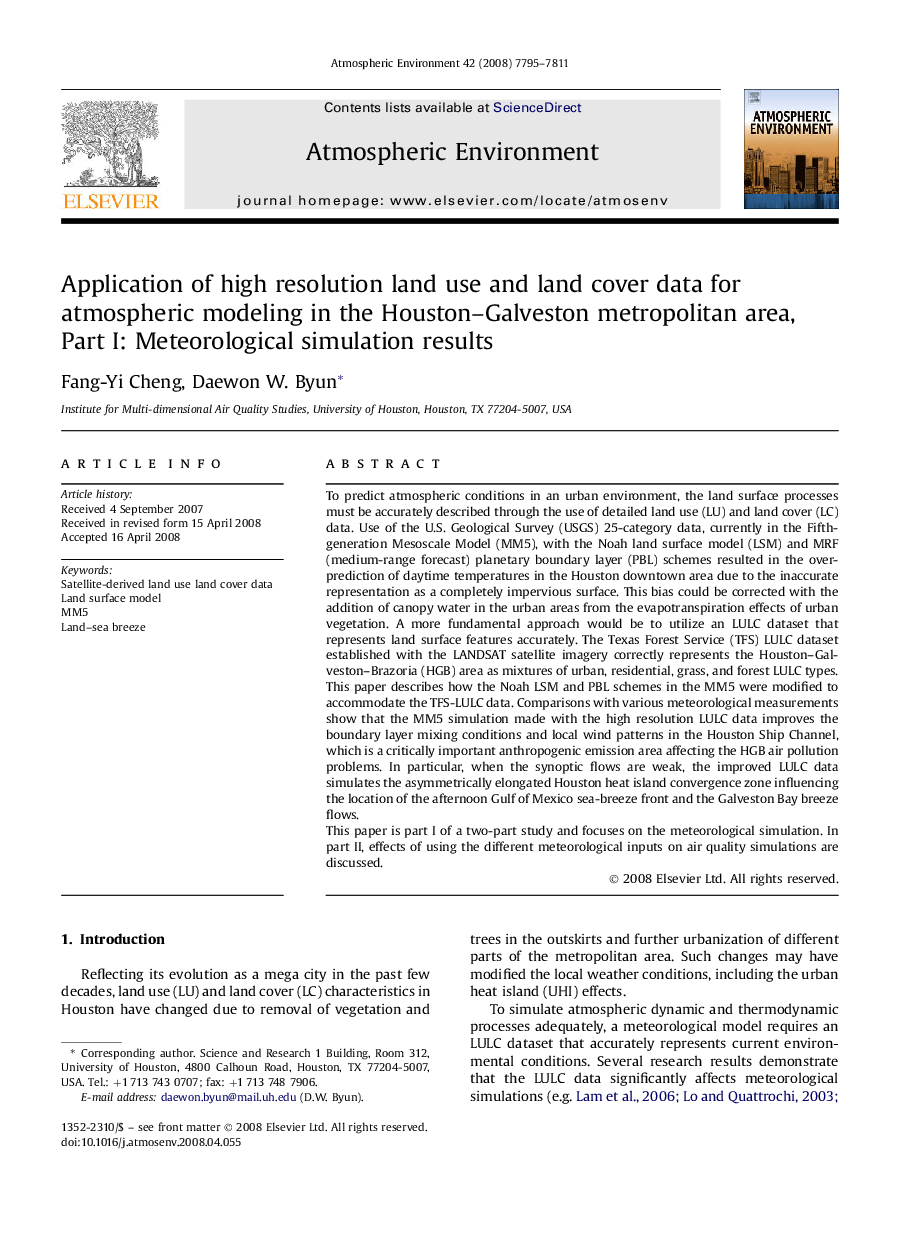| کد مقاله | کد نشریه | سال انتشار | مقاله انگلیسی | نسخه تمام متن |
|---|---|---|---|---|
| 4441627 | 1311115 | 2008 | 17 صفحه PDF | دانلود رایگان |

To predict atmospheric conditions in an urban environment, the land surface processes must be accurately described through the use of detailed land use (LU) and land cover (LC) data. Use of the U.S. Geological Survey (USGS) 25-category data, currently in the Fifth-generation Mesoscale Model (MM5), with the Noah land surface model (LSM) and MRF (medium-range forecast) planetary boundary layer (PBL) schemes resulted in the over-prediction of daytime temperatures in the Houston downtown area due to the inaccurate representation as a completely impervious surface. This bias could be corrected with the addition of canopy water in the urban areas from the evapotranspiration effects of urban vegetation. A more fundamental approach would be to utilize an LULC dataset that represents land surface features accurately. The Texas Forest Service (TFS) LULC dataset established with the LANDSAT satellite imagery correctly represents the Houston–Galveston–Brazoria (HGB) area as mixtures of urban, residential, grass, and forest LULC types.This paper describes how the Noah LSM and PBL schemes in the MM5 were modified to accommodate the TFS-LULC data. Comparisons with various meteorological measurements show that the MM5 simulation made with the high resolution LULC data improves the boundary layer mixing conditions and local wind patterns in the Houston Ship Channel, which is a critically important anthropogenic emission area affecting the HGB air pollution problems. In particular, when the synoptic flows are weak, the improved LULC data simulates the asymmetrically elongated Houston heat island convergence zone influencing the location of the afternoon Gulf of Mexico sea-breeze front and the Galveston Bay breeze flows.This paper is part I of a two-part study and focuses on the meteorological simulation. In part II, effects of using the different meteorological inputs on air quality simulations are discussed.
Journal: Atmospheric Environment - Volume 42, Issue 33, October 2008, Pages 7795–7811